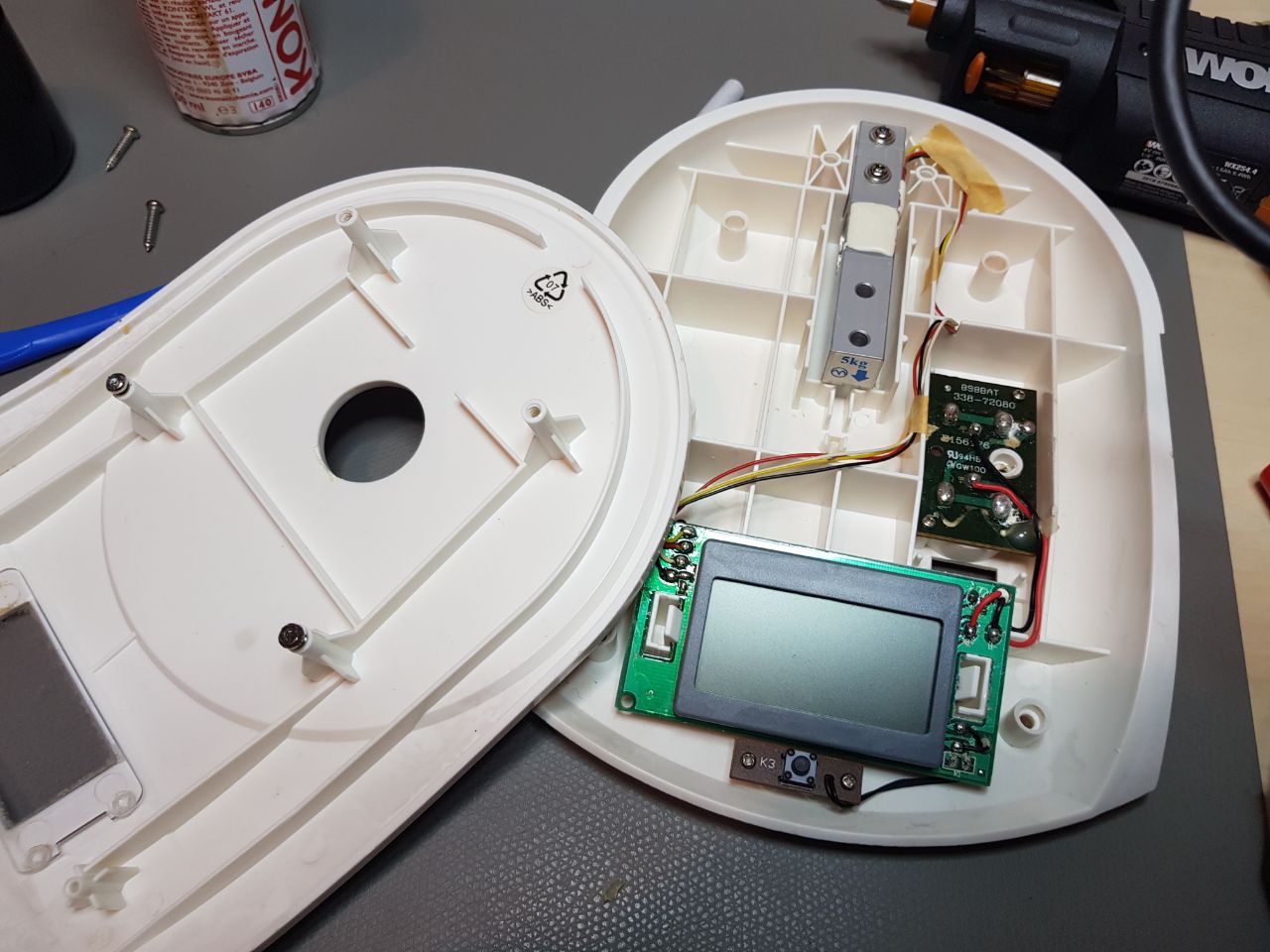Cat Feeder Watchdog
Hack a kitchen scale to check that my automatic cat feeder really delivers the amount of food I expect.
Hack a kitchen scale to check that my automatic cat feeder really delivers the amount of food I expect.
To make the experience fit your profile, pick a username and tell us what interests you.
We found and based on your interests.
My unorthodox way of opening the kitchen scale had a side effect to melt some plastic around the screws. The deformation made it impossible to close back the enclosure, so I wanted to drill the screw holes a bit. Before this, I wanted to remove all electronic parts to avoid plastic debris going everywhere.
I was going to un-screw the load cell when this happened:
Well, that sucks. One of the two screws carrying the load cell snapped. They're meant to bear the entire weight of the cat feeder. I can't remove that piece of screw, and I don't feel comfortable in using just one screw. So the entire base is now useless.
I threw all the plastic away and kept the 5kg load cell and some of the electronics (could be useful in some other projects). And I'm 3D-printing a new load cell bracket.
I thought it was an HX712 load cell ADC, but after a cleaning and a thorough inspection instead this IC shows itself as an LM324DG. Lesson learned: never make optimistic assumptions...
In the meanwhile I also scratched/shorted some pads so now the scale thinks the battery is low - but I'm powering from a lab supply!
Time to buy a proper HX711-based module I guess.
It was a bit harder than I thought, but I finally managed to open the old kitchen scale I had lying around: Two of the screws didn't leave their place even though I put some spray on it (just realized I put contact cleaner instead of WD-40... d'oh!). Any attempt with screwdrivers only stripped them more and more. So I took my soldering iron and heated the screws while applying some force to separate the two plastic parts, waiting for the plastic around to soften. Success!
Two of the screws didn't leave their place even though I put some spray on it (just realized I put contact cleaner instead of WD-40... d'oh!). Any attempt with screwdrivers only stripped them more and more. So I took my soldering iron and heated the screws while applying some force to separate the two plastic parts, waiting for the plastic around to soften. Success!
Inside I found what I was hoping to find: a load cell and the handling circuit. And felt lucky to find the analog frontend separated by the IC blob:
Create an account to leave a comment. Already have an account? Log In.
Become a member to follow this project and never miss any updates